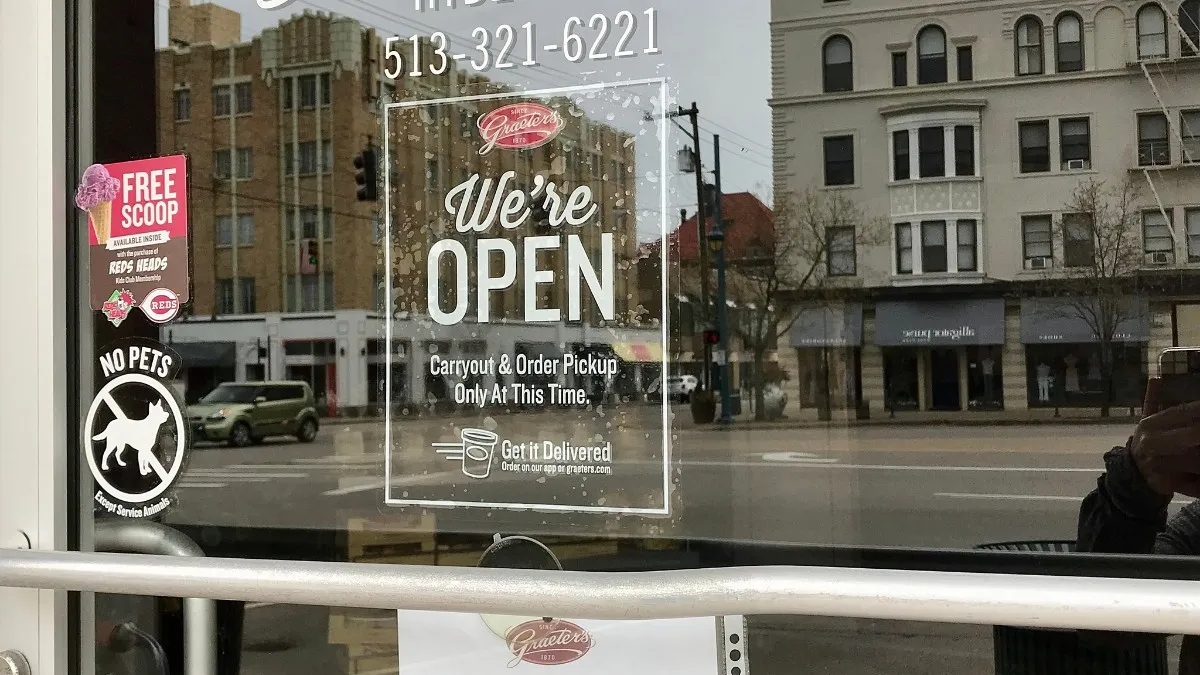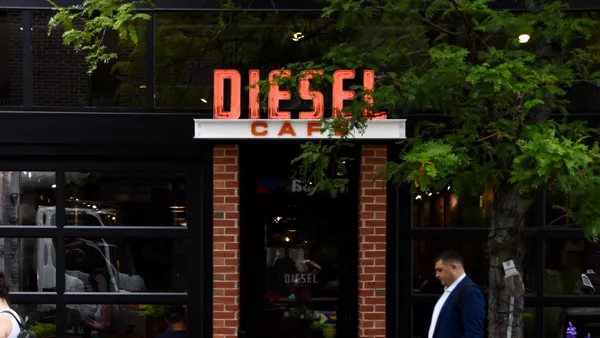Dive Brief:
- Nearly three months after the novel coronavirus pandemic forced nationwide dining room restrictions, 68% of all restaurants are located in jurisdictions that have since reopened dine-in business. However, according to The NPD Group, that doesn’t mean restaurants in those areas have actually reopened.
- With regulations loosening, customer transactions at major restaurant chains have improved. In the week ending May 31, transactions were down by 18% compared to the same period last year, marking a 3% week-over-week improvement.
- “The U.S. foodservice industry today remains solidly in the re-start phase as restaurants begin to reopen their on-premise operations,” David Portalatin, NPD food industry advisor, said in a news release. “The industry will move to the recovery phase when all states reopen on-premise dining and we can begin to make a detailed assessment of how many permanent restaurant closures there are and how that will affect what the industry will look like as it re-emerges.”
Dive Insight:
These transaction improvements vary geographically depending on local policies. New York and California — two of the top three states with the highest rates of coronavirus cases — remain mostly closed for on-premise dining and, as such, have experienced the sharpest drop in transactions at negative 34% and negative 27%, respectively, for the week ending May 31 compared to a year ago. On the other hand, transactions in Kentucky, where on-premise dining at limited capacity opened May 11, were down just 2%.
Also, as expected, full-service chains remain the hardest hit by lingering closures, with a 37% decline in transactions versus this period last year. Comparatively, quick-service chains, which have relied heavily on their drive-thru footprints during the lockdown, are down 16% versus a year ago.
Though these numbers are nothing to write home about, a positive trajectory is undoubtedly welcome news for some of the worst months in the industry’s history, in which transactions were down by 43% during peak of the crisis during the week ending April 12, and in which the industry itself shed about half of its jobs.
Transactional traction isn’t the only silver lining in the industry this week. Chains that have shifted their focus to off-premise channels are likely seeing some returns. The NPD Group found that digital orders from restaurants was up 106% in April compared to April 2019. Further, third-party delivery orders were up 204%. Digital ordering now accounts for nearly 20% of all restaurant orders. This could explain why tech-forward chains like Chipotle and Wingstop haven’t been affected as deeply as chains forced to sprint and catch up on the digital side.
Because of these rapidly-formed digital-ordering habits, Portalatin said the industry, “might expect a digital divide that sets apart restaurants with well-executed digital offerings and requires those without to turn to the newfound prowess of third-party platforms.”
Meanwhile, drive-thru made up 46% of visits in April, according to The NPD Group, illustrating why QSR numbers are more insulated than full-service. It could also explain why chains like Dunkin’ and Taco Bell are starting to recover some of their labor force. Dunkin’ announced this week its franchisees are hiring 25,000 employees, while Taco Bell plans to hire 30,000 employees during the summer.
Still, while National Restaurant Association CEO Tom Bene told Bloomberg this week that restaurants are starting to rehire, he cautioned that recovery is slow.
“There’s still a lot of uncertainty out there,” Bene said.
One major uncertainty, particularly for full-service restaurants, is the comfort level of consumers to return. According to a Toast survey emailed to Restaurant Dive, only 19% of consumers are “very comfortable” and would “go to a restaurant immediately” for dine-in service, once they open in their area/state.













